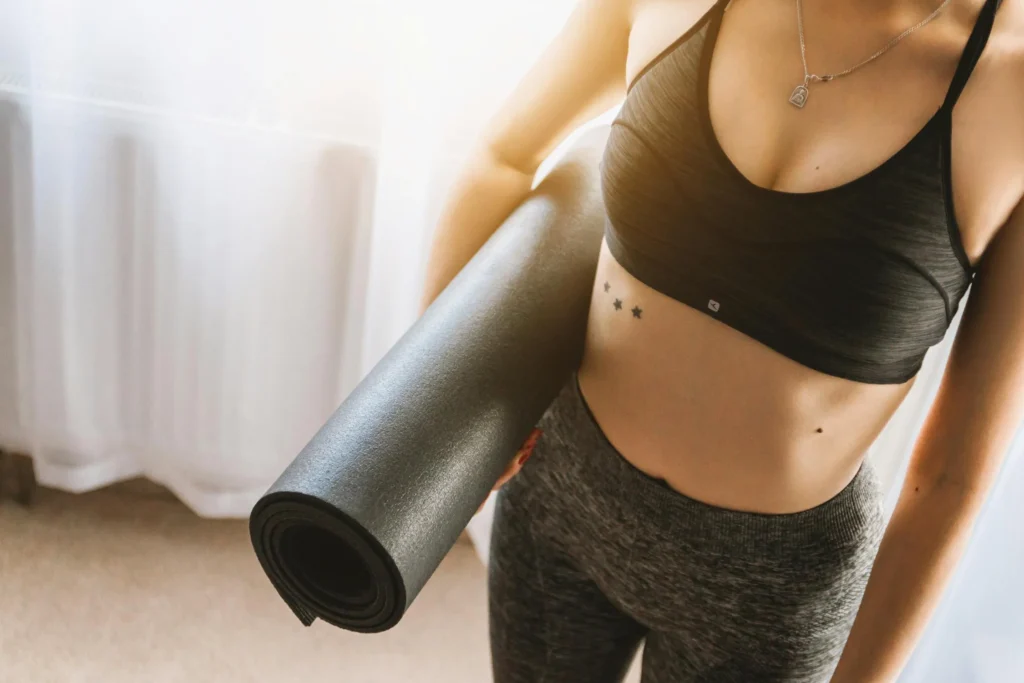Physical activity, encompassing any bodily movement produced by skeletal muscles that results in energy expenditure, is far more than just a way to stay slim. It’s a cornerstone of overall health and well-being, impacting nearly every system in our bodies. From the cellular level to our mental state, regular physical activity triggers a cascade of beneficial changes, strengthening us inside and out. This blog post will delve into the profound effects of physical activity on our bodies, exploring the intricate mechanisms and long-term benefits.

The Immediate Effects of Physical Activity
Even a single bout of exercise can produce noticeable changes in our bodies. These immediate effects are often the most tangible and can motivate us to keep moving:
- Increased Heart Rate and Respiration: As we exercise, our muscles demand more oxygen to fuel their activity. This triggers an increase in heart rate to circulate blood more quickly, delivering oxygen and nutrients to the working muscles. Respiration also increases to take in more oxygen and expel carbon dioxide, a byproduct of energy production.
- Elevated Body Temperature: Exercise generates heat as a byproduct of energy expenditure. Our bodies regulate this increase in temperature through sweating, which helps to cool us down.
- Hormonal Changes: Physical activity stimulates the release of various hormones, including endorphins, which have mood-boosting and pain-relieving effects. This is often referred to as the “runner’s high.”
- Muscle Fatigue: Depending on the intensity and duration of the activity, muscles may experience fatigue due to the depletion of energy stores and the accumulation of metabolic byproducts.
- Increased Blood Flow to Muscles: Blood vessels in the working muscles dilate to increase blood flow, delivering more oxygen and nutrients. This can lead to the “muscle pump” effect, where muscles feel fuller and tighter.
The Long-Term Benefits of Regular Physical Activity
The real magic of physical activity lies in its long-term effects. Consistent exercise leads to significant adaptations in our bodies, improving our health and reducing the risk of chronic diseases:
- Cardiovascular Health: Regular physical activity strengthens the heart muscle, improves circulation, lowers resting heart rate, and reduces blood pressure. It also helps to improve cholesterol levels by increasing HDL (good) cholesterol and lowering LDL (bad) cholesterol. These changes significantly reduce the risk of heart disease, stroke, and other cardiovascular problems.
- Weight Management: Physical activity burns calories, helping to create a calorie deficit that leads to weight loss or maintenance. It also helps to build muscle mass, which increases metabolism and helps to burn more calories even at rest.
- Musculoskeletal Health: Exercise strengthens bones, increases muscle mass and strength, and improves joint flexibility. This reduces the risk of osteoporosis, fractures, and other musculoskeletal conditions.
- Metabolic Health: Physical activity improves insulin sensitivity, helping to regulate blood sugar levels and reduce the risk of type 2 diabetes. It also helps to improve the body’s ability to process and utilize glucose.
- Neurological Health: Exercise has been shown to improve cognitive function, memory, and mood. It may also help to reduce the risk of neurodegenerative diseases like Alzheimer’s and Parkinson’s.
- Mental Health: Physical activity is a powerful mood booster. It can help to reduce stress, anxiety, and depression. The release of endorphins during exercise contributes to feelings of well-being and can improve sleep quality.
- Immune System Function: Regular exercise can strengthen the immune system, making us less susceptible to infections. It may also help to reduce inflammation throughout the body.
- Cancer Prevention: Some studies suggest that physical activity may help to reduce the risk of certain types of cancer, including colon, breast, and endometrial cancer.
- Improved Sleep Quality: Regular exercise can improve sleep quality by helping us fall asleep faster, sleep more deeply, and wake up feeling more refreshed.
- Increased Longevity: Overall, regular physical activity is associated with a longer lifespan and a reduced risk of premature death.
How Physical Activity Affects Specific Body Systems:
- Cardiovascular System: Exercise strengthens the heart, improves blood circulation, and lowers blood pressure.
- Respiratory System: Exercise increases lung capacity and improves the efficiency of oxygen uptake.
- Musculoskeletal System: Exercise strengthens bones, increases muscle mass and strength, and improves joint flexibility.
- Endocrine System: Exercise affects the release of various hormones, including endorphins, insulin, and growth hormone.
- Nervous System: Exercise improves cognitive function, memory, and mood.
- Digestive System: Exercise can improve digestion and reduce the risk of constipation.
- Immune System: Exercise can strengthen the immune system and reduce inflammation.
Types of Physical Activity and Their Benefits:
Different types of physical activity offer different benefits. A well-rounded exercise program should include a variety of activities:
- Cardiovascular Exercise (Aerobic Exercise): Activities like running, swimming, cycling, and brisk walking improve cardiovascular health and burn calories.
- Strength Training (Resistance Training): Activities like weightlifting, bodyweight exercises, and resistance band workouts build muscle mass and strength.
- Flexibility Exercises: Activities like stretching and yoga improve joint flexibility and range of motion.
- Balance Exercises: Activities like tai chi and yoga improve balance and coordination, reducing the risk of falls.
How Much Physical Activity is Recommended?
The Physical Activity Guidelines for Americans recommend that adults aim for at least 150 minutes of moderate-intensity aerobic activity or 75 minutes of vigorous-intensity aerobic activity per week, along with muscle-strengthening activitiesat least two days per week. It’s important to start gradually and gradually increase the intensity and duration of your workouts as you get fitter.
Making Physical Activity a Part of Your Life:
Making physical activity a regular part of your life requires commitment and planning. Here are some tips:
- Find Activities You Enjoy: Choose activities that you find fun and engaging, as you’re more likely to stick with them.
- Set Realistic Goals: Start with small, achievable goals and gradually increase the intensity and duration of your workouts.
- Make it a Habit: Schedule your workouts in your calendar and treat them like any other important appointment.
- Find a Workout Buddy: Exercising with a friend or family member can help you stay motivated.
- Track Your Progress: Keep a record of your workouts to track your progress and stay motivated.
- Listen to Your Body: Pay attention to your body’s signals and rest when you need to.
- Don’t Get Discouraged: Everyone has setbacks. If you miss a workout, don’t get discouraged. Just get back on track as soon as possible.
Conclusion: A Gift to Your Body
Physical activity is not just about physical appearance; it’s about investing in your overall health and well-being. The benefits of regular exercise are far-reaching, impacting nearly every system in our bodies. By making physical activity a part of your life, you are giving your body a gift that will keep on giving for years to come. From stronger muscles and bones to improved mood and cognitive function, the positive effects of exercise are undeniable. It’s a powerful tool for preventing chronic diseases, improving quality of life, and even extending lifespan. So, find an activity you enjoy, get moving, and experience the transformative power of physical activity. Your body will thank you for it.





Leave a Reply
You must be logged in to post a comment.